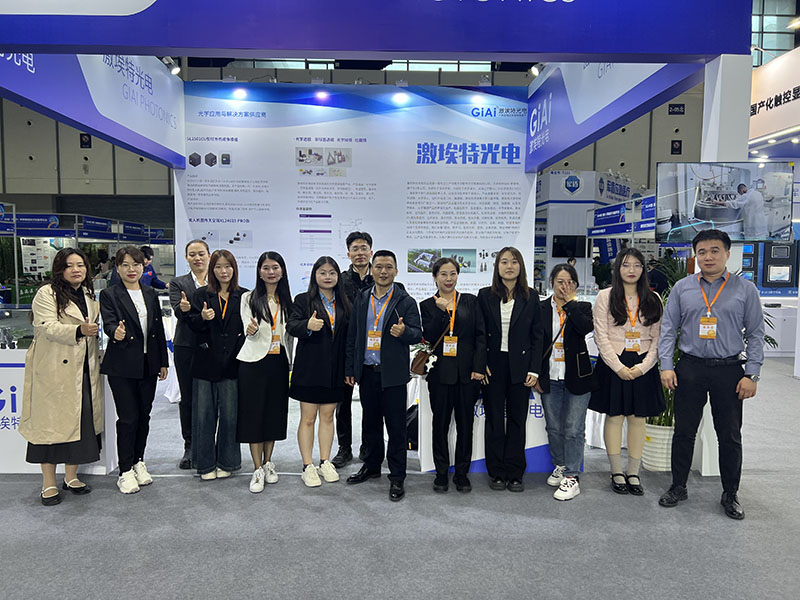Filters are important components in optical systems. Their performance directly affects the image quality, light signal transmission efficiency, and the overall performance of the system. Therefore, confirming the performance of filters is a key step to ensure stable and reliable operation of optical systems. We preliminarily explore the basic performance parameters of filters, test methods, and performance evaluation in practical applications, and explore how to rigorously and rationally understand the performance of filters.

Basic performance parameters of optical filters
The performance of filters is mainly described by a series of basic parameters, including:
Transmittance: refers to the degree of transmittance of a filter to a specific wavelength of light, usually expressed as a percentage. High transmittance means that more light can pass through the filter, which is suitable for application scenarios that require high brightness or high sensitivity, such as laser systems, high-definition imaging, etc.
Reflectivity: refers to the ratio of light reflected back by the filter to the incident light. In some applications, such as anti-reflection coatings for optical lenses, high reflectivity is required to reflect light of a specific wavelength; while in other applications, such as reducing light loss, low reflectivity is required. Common components for measuring reflectivity include reflectors and dichroic mirrors.
Absorption: Although not directly measured, understanding the absorption characteristics of the filter is crucial to evaluating its overall performance. High-absorption filters can effectively absorb unwanted light and reduce stray light interference.

Cut-off wavelength: refers to the specific wavelength point at which the filter begins to significantly block light. In situations where precise control of the light band is required, such as spectral analysis, fluorescence detection, etc., the accuracy of the cut-off wavelength is crucial.
Bandwidth: measures the width of the wavelength range that the filter allows light to pass through. The bandwidth determines the wavelength range that the filter allows light to pass through. For applications that select light in a specific wavelength range, such as fluorescence microscopy, Raman spectrometer, etc., the choice of bandwidth directly affects the observation effect. The narrower the bandwidth, the higher the accuracy and the better the light purification effect; on the contrary, the wider the bandwidth, the wider the application range. It is actually necessary to select according to the application situation. The narrower the bandwidth, the better.
Surface flatness and finish: Observe the surface quality of the filter through a microscope or magnifying glass to evaluate its flatness, finish, and whether there are defects such as scratches and bubbles. These defects will affect the optical properties of the filter, such as transmittance, imaging quality, etc.
Dimensional accuracy: Use measuring tools such as calipers and micrometers to accurately measure the length, width, thickness and other dimensional parameters of the filter to ensure that it meets the design requirements. The accuracy of the size largely determines the actual installation effect and performance of the filter.

Test methods for optical filters
Spectrophotometer analysis method: Use a spectrophotometer to test the degree of light absorption of the filter, that is, the transmittance. The transmittance is an important indicator that reflects the change in the light intensity that the filter allows light to pass through. The transmittance performance of the filter can be evaluated by calculating the transmittance.
Spectral analysis method: Use a spectrometer to measure the spectral characteristics of the filter, including parameters such as cut-off wavelength, bandwidth, peak wavelength, peak transmittance, and transition band slope. These parameters can fully reflect the optical performance of the filter.
Dimension measurement method: Use measuring tools such as calipers or micrometers to accurately measure the length, width, thickness and other dimensional accuracy parameters of the filter to ensure that it meets the design requirements.
Application environment test method: Perform various performance tests on the actual use environment of the filter, such as high temperature resistance, low temperature resistance, moisture corrosion resistance, vibration resistance, laser threshold, etc. These tests can evaluate the stability and reliability of the filter in different environments.

Performance Evaluation in Practical Applications
Imaging quality evaluation: Apply filters to imaging systems, observe and record changes in imaging quality. By comparing the imaging effects before and after using filters, the degree of improvement of imaging quality by filters can be evaluated.
Optical signal transmission efficiency evaluation: In optical signal transmission systems, by measuring the changes in optical signal intensity before and after filters, the effect of filters on optical signal transmission efficiency can be evaluated. High transmittance filters can reduce optical signal loss and improve transmission efficiency.
System stability evaluation: Apply filters to optical systems, observe and record system stability for a long time. By comparing the changes in system stability before and after using filters, the effect of filters on system stability can be evaluated.

in conclusion. Confirming the performance of the filter is a comprehensive evaluation process, which requires a comprehensive judgment based on the basic performance parameters of the filter, the test methods, and the performance evaluation in actual applications. Through strict inspection and testing processes, it can be ensured that the optical performance, appearance quality, dimensional accuracy, and environmental adaptability of the filter meet the design requirements and usage needs. At the same time, for different types of filters and different application scenarios, it is necessary to select appropriate test methods and evaluation standards to ensure the accuracy and reliability of the evaluation results.







